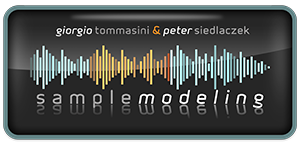new trombones, advice please.
Hi, thinking about getting the trombones, however I'm a little concerned about the resources it appears to demand from the recommendations.
I have a 1.83 ghz "core 2 duo" laptop with 3GB ram, M-audio fast track pro, and will only be playing one trombone at a time (for a lead instrument only).
I know it states lesser systems have good results with higher buffer sizes, but I don't like latency (so if I can't get the least possible buffer size, as I can with the saxes, I'm not interested until I upgrade my laptop).
Any advice appreciated.
Regards Pete.
I have a 1.83 ghz "core 2 duo" laptop with 3GB ram, M-audio fast track pro, and will only be playing one trombone at a time (for a lead instrument only).
I know it states lesser systems have good results with higher buffer sizes, but I don't like latency (so if I can't get the least possible buffer size, as I can with the saxes, I'm not interested until I upgrade my laptop).
Any advice appreciated.
Regards Pete.

Comments
I still have an old P4-3GHz with 1.5 Go RAM and XP and i can play T-bone with 8ms latency** and Kontakt internal's convolution reverb without hearing crakle.
And as i switched-on the hypertreading i can only use 50% of the CPU for one instrument !
This is valid only if i played Kontakt alone.
If i do the same with kontakt in Cubase i hear crakle.
For me T-bone require little bit less cpu than The trumpet.
As a core 2 duo 1.83 GHz is two time stronger than my P4 i think there is no problem with T-bone and your laptop.
Somebody can confirm this ?
If this can help...
** : I do not know my buffer size cause i only choose the latency on my card (inspire 1394) and the card adapt the buffer size for me.
Somebody can confirm this ?
If this can help...
Yes, Thanks Valouz, this is a great help
Regards Pete.
P.s, I only want 1 trombone at a time, and I do all my effects such as reverb with a hardware multi-effects pedal.
I have so many different saxes/trumpets now I'm in heaven
I've tried doing the same with synths, but they still sound like synths and other samples still act like samples.
Keep the instruments coming please.
Regards Pete.
If this can help...
Thanks again, I decided to accept your review, and the Trombones are indeed playing on my system. As with the saxes/trumpet, with my M-audio set at 256 samples the Kontakt player is reporting an overall latency of 4.1ms with no crackles
Love the bones.
Regards Pete.
And what is the cpu % ?
And what is the cpu % ?
Not scientific, I have all services internet/wifi etc etc enabled. But when not playing my CPU in the "task manager" is going from 3-25% (like a yoyo), when playing it ranges from 20-55%.
I feel no latency, as I said Kontakt states 4.1ms overall (Processing 2.9ms and Output 1.2ms). My audio sample rate is 88200 and I have no crackles.
Regards Pete.
I still have an old P4-3GHz with 1.5 Go RAM and XP and i can play T-bone with 8ms latency**
Hi, Might be of interest, when I went back to the Kontakt 3 player I noted the "audio" sample rate had changed to 44100, and I also noted Kontakt 3 was reporting 8ms latency at a buffer of 256 (like you are getting presently).
However when I put the "Audio" sample rate back to 88200 on my M-audio software and the Kontakt 3 player, Kontakt 3 again (like "K4") reported a 4.1ms latency.
Regards Pete.
this is completely normal (and true :-)). Setting the sampling frequency to 88,2 kHz doubles the speed with which the buffer is read. To read 256 samples using SR 44100 Hz takes 256/44100 seconds (= 5,8 ms). If you read the same buffer using the double SR, it will take 256/88200 seconds (= 2,9 ms).
This means: if working with 88,2 kHz, you can (or even should) double the buffer size, otherwise the CPU load will be, of course, higher... :-)
Best
Peter
This means: if working with 88,2 kHz, you can (or even should) double the buffer size,
Hi Peter, I don't think I "should double the buffer size", I get crystal clear sound
If I had a problem with CPU, which I haven't thus far, I would just turn off certain background apps, rather than increase buffer/latency. And if that didn't work I would rather buy a new laptop than increase latency, but fortunately that isn't an issue as I only play one instrument at any one time.
Regards Pete.